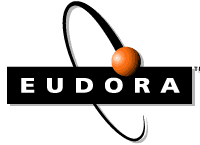ReminderFox places reminders and to-do items right before your email-hungry eyes in Mozilla Thunderbird. ReminderFox reminders attach to messages neatly, but unfortunately cannot take email status in account ("alert me if I haven't replied to this email in the next three days")
Description:
* ReminderFox shows you reminders in Mozilla Thunderbird window status bars.
* You can create periodic reminders and to-do items in ReminderFox.
* Hovering over the ReminderFox status with the mouse displays full reminders.
* You can import and export reminders to and from ReminderFox or synchronize using WebDAV.
* You can add a reminder to any message, and later open the email easily from within ReminderFox.
* Reminders can be organized with categories and found easily using fast search.
* ReminderFox can turn iCal events received in emails into reminders and you can create reminders by dragging and dropping.
* On Windows, ReminderFox can display a reminder pop-up from the system tray.
* ReminderFox supports Mozilla Thunderbird and Mozilla Firefox.
Description:
* ReminderFox shows you reminders in Mozilla Thunderbird window status bars.
* You can create periodic reminders and to-do items in ReminderFox.
* Hovering over the ReminderFox status with the mouse displays full reminders.
* You can import and export reminders to and from ReminderFox or synchronize using WebDAV.
* You can add a reminder to any message, and later open the email easily from within ReminderFox.
* Reminders can be organized with categories and found easily using fast search.
* ReminderFox can turn iCal events received in emails into reminders and you can create reminders by dragging and dropping.
* On Windows, ReminderFox can display a reminder pop-up from the system tray.
* ReminderFox supports Mozilla Thunderbird and Mozilla Firefox.
Advantages:
* ReminderFox displays periodic and one-time reminders as well as to-do items in Thunderbird
* You can attach reminders to emails and open the message fast from ReminderFox
* Reminders from ReminderFox are unobtrusive yet effective
* You can attach reminders to emails and open the message fast from ReminderFox
* Reminders from ReminderFox are unobtrusive yet effective












































